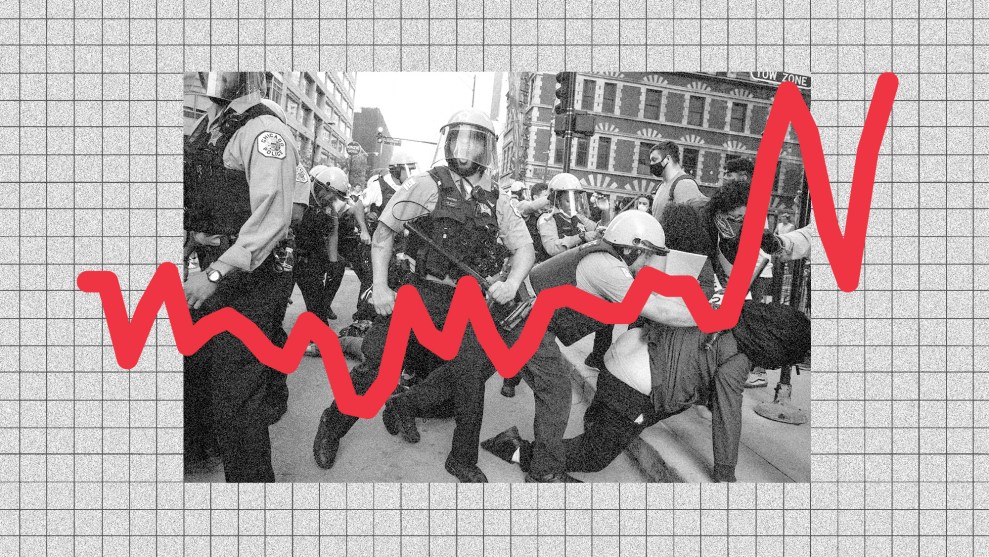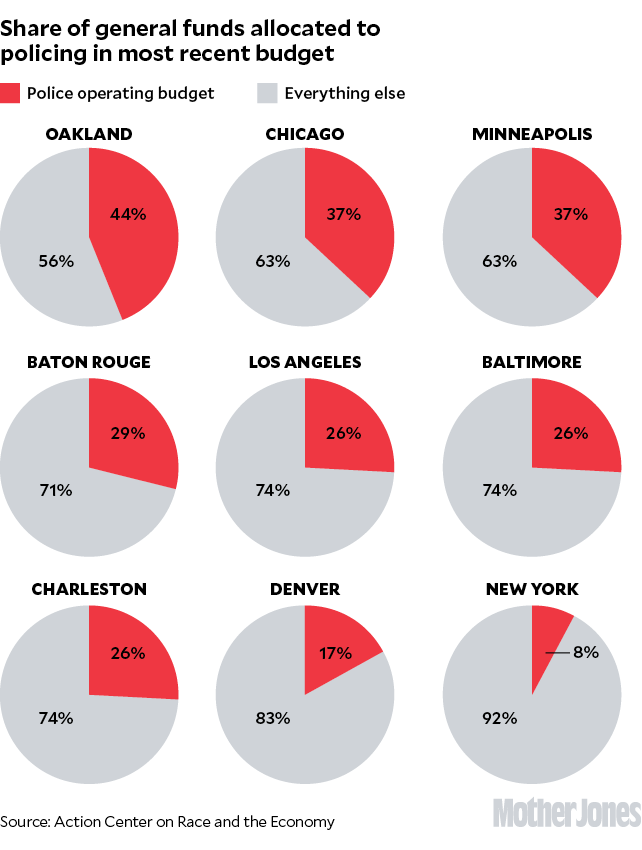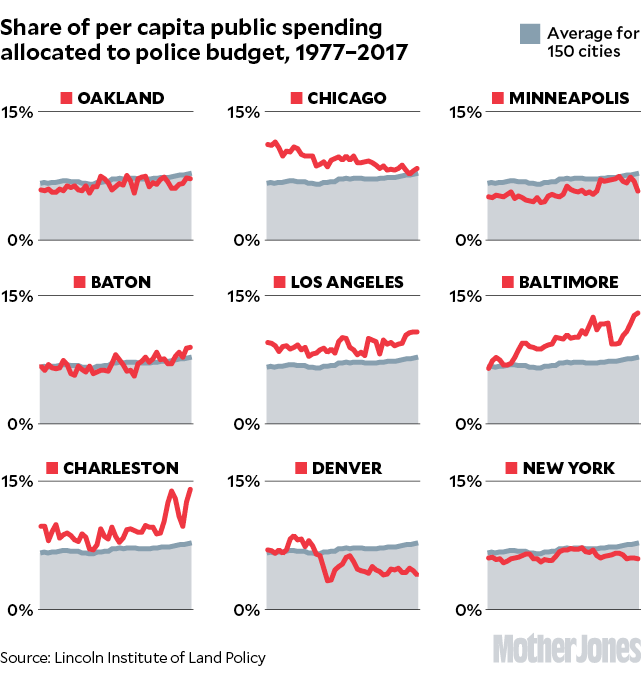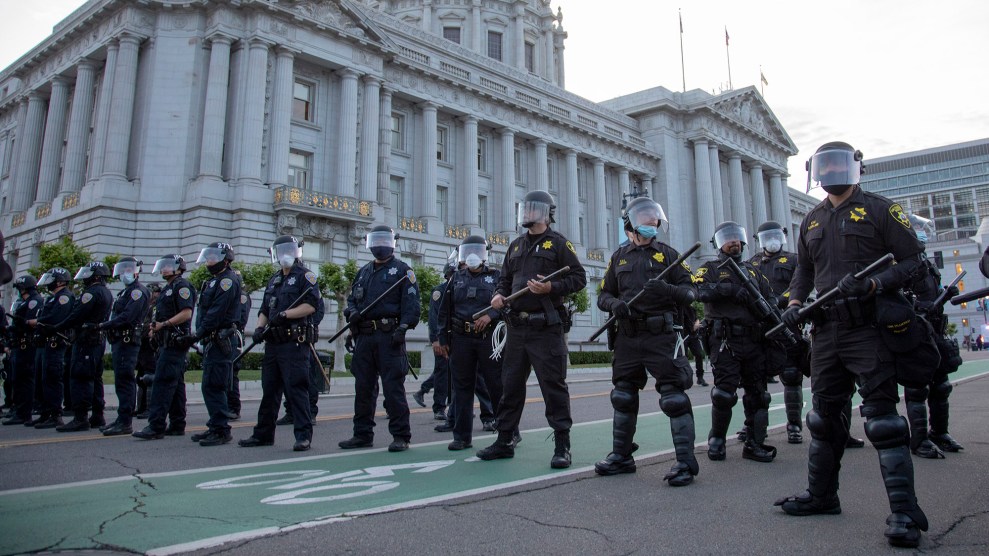
Mother Jones illustration; Ashlee Rezin Garcia/Sun-Times/AP
George Floyd’s death in Minneapolis nearly two months ago sparked a national conversation about defunding the police, an idea once considered niche and radical. Police spending may be too high. But what cities spend varies widely.
We looked at city budgets in nine cities using the Action and Race Economy Center’s budget tool to understand what share of their general funds go to police operating budgets. While there’s wide variation in how much cities spend on police, most dedicate between 25 percent to 40 percent of their budgets to policing. Some cities, such as Los Angeles, allocate nearly quarter of their general funds to police budgets. Yet even though New York spends only 8 percent of its general funds on policing, it adds up to $5.2 billion, nearly twice what LA spends.

Even as crime rates have declined in the last 30 years, police budgets have risen in many cities. We looked at historical data on police budgets from 1977 to 2017 compiled by Lincoln Institute of Land Policy to look at per capita spending on police budgets. While the trends between cities still vary, the average share of per capita spending going to police budgets across 150 cities rose from 6.6 percent in 1977 to 7.7 percent in 2017.



















